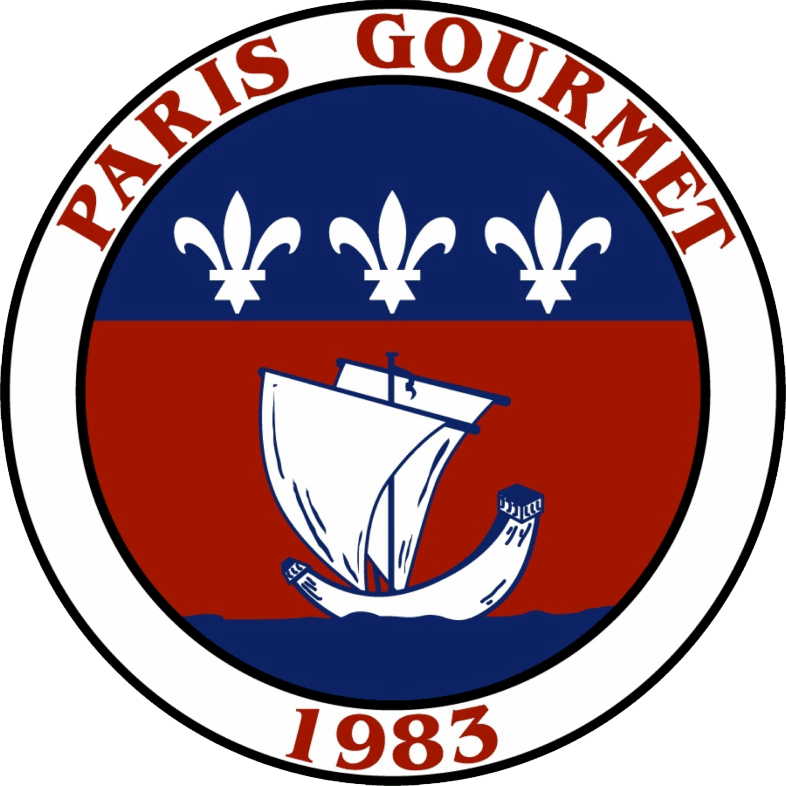Cuberdon - The Iconic Belgian Cone
- By Charlotte Brown
- October 29, 2025
CUBERDON IS A CONE-SHAPED BELGIAN CONFECTION WITH A RASPBERRY FLAVOR. ITS PRODUCTION IS LONG AND COMPLEX, REQUIRING REAL EXPERTISE. LITTLE KNOWN ABROAD, THE LITTLE CANDY IS VERY POPULAR IN BELGIUM.
Text by Mégane Fleury
International Cuisine
Gourmet Delights Beyond our Borders
Belgian chocolate is famous the world over. The same cannot be said for the country’s confectionery. Yet it's home to a sweet specialty that's been enjoyed for over a century: cuberdon. This small cone, traditionally flavored with raspberry, is composed mainly of sugar, water, fruit and gum arabic. Crunchy on the outside, liquid on the inside.
The candy generally weighs 15 grams and is about 2.5 cm wide.
The Mysterious History of Cuberdon
“Its recipe is not protected," advises Davide Rosato, founder of specialist company Le Roi du Cuberdon. “We don't really know where it originated, everyone has their own theory." In an AFP article quoted by the media outlet La Dépêche in 2013, Jérôme Stéfanski, creator of Léopold cuberdons, stated that the only sure thing about the little candy is that it was invented in Belgium during the second half of the 19th century. "As for the rest of the story, there is no exact trace of its appearance," he said.
Some believe it was invented by a clergyman in the Bruges area, while others claim it was created by chance by a pharmacist in Ghent. This hesitancy about its history is reflected in the names given to it: it's sometimes called a bonnet or priest's hat, but the Flemish call it neuzeke, literally a little nose. “There is a real debate between the Flemish and Walloons about its history," adds Davide Rosato. “Everyone claims ownership of the recipe.” When it comes to the flavor of cuberdon, however, everyone agrees: the traditional version contains raspberry. "Belgium has always been a raspberry- producing country!" explains the Belgian artisan. What's more, when the candy was invented, the Belgian colonies gave confectioners access to acacia sap, more commonly known as gum arabic.
A Complex Product to Produce and Export
Davide Rosato notes that few confectioners today continue to make cuberdons in the traditional, artisanal way. Most of those sold in Belgium are industrial. “It's really complicated to make," he stresses. “Cooking is difficult and time-consuming, as it takes about seven days in the oven, and you have to check their progress almost every day." This long period spent in the oven creates an "alchemy between the sugar, glucose and fruit", giving the candy the desired texture: hard on the outside and melting or even liquid on the inside. At the Roi du Cuberdon, Davide Rosato prefers the interior to be soft rather than liquid. These different characteristics make cuberdon a particularly protected product for the craftsmen who continue to make it. They share only snippets of the recipe and exact composition, to preserve their know-how.
A national treasure, cuberdon is now used to flavor other recipes
In addition to preparation, preservation is also an issue when making cuberdons. These sweet candies do not stand up well to freezing and refrigeration, and will only keep for six to eight weeks. For this reason, exporting has always been complicated, and cuberdon has remained a rather confidential specialty, compared to the famous Belgian waffles or French fries. Davide Rosato has overcome this constraint by adapting his recipe to extend this period: "for my cuberdons, the use-by date is six months maximum". Thanks to this long shelf-life, the company now exports its products as far afield as Canada and Mexico.
Cuberdon, a Wide Range of Variations
In Belgium, Davide Rosato finds that the traditional version of the product is the most popular with customers. "We've already tried making some with vegetables, but it didn't do well because it was too out of the ordinary. We launched a sugar-free range for diabetics, but it too is struggling to get off the ground. In Belgium, people prefer the classics, so it's difficult to innovate."
A national treasure, cuberdon is now used to flavor other recipes. There are cuberdon ice creams, jams, syrups and even liqueur. It can also be used to accompany savory dishes. Published in 2014, Le Cuberdon, by Olivier Carpentiers, brings together some fifty recipes from Michelin-starred chefs. Original creations include pan-fried foie gras with beet and cuberdon-blackcurrant caramel, or scallop sashimi with cuberdon-orange granita and coffee crumble.
 Davide Rosato
Davide Rosato
Davide Rosato, confectioner, le Roi du CuberdonSaint-Nicolas (Belgium)
Davide Rosato is a confectioner specializing in cuberdon. This former carpenter discovered confectionery by chance some thirty years ago. He quickly developed a passion for candy and opened his own business, le Roi du Cuberdon, in 1999. Today, a team of seven employees produce around 30 tonnes of cuberdon every year. In addition to the raspberry classics, Davide Rosato has developed a wide range of cuberdons in thirteen different flavors. All are made without chemical additives, according to a recipe dating back to 1932. The artisan plans to market the product in France in the near future, in a modified version: this new cuberdon will take the shape of a small cannelé, and will change its name to My French Cuberdon.
Sources: https://www.ladepeche.fr/article/2013/08/12/1688357-le-cuberdon-un-produit-typiquement-belge-entoure-de-mystere.html ; https://focusonbelgium.be/fr/le saviez-vous/saviez-vous-que-le-cuberdon-ne-se-trouve-quen-belgique ; https://sosoir.lesoir.be/le-cuberdon-une-gourmandise-bien-belge-qui-ne-cesse-de-se-renouveler ; https://www.cuberdonsleopold.com/la-legende
